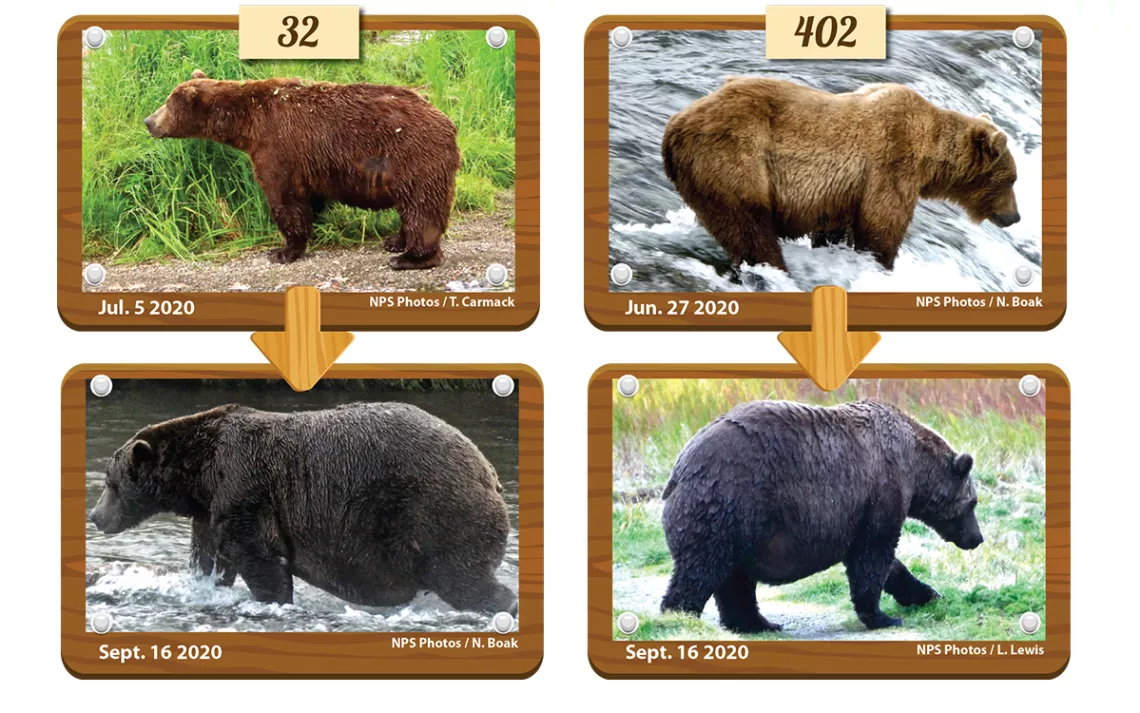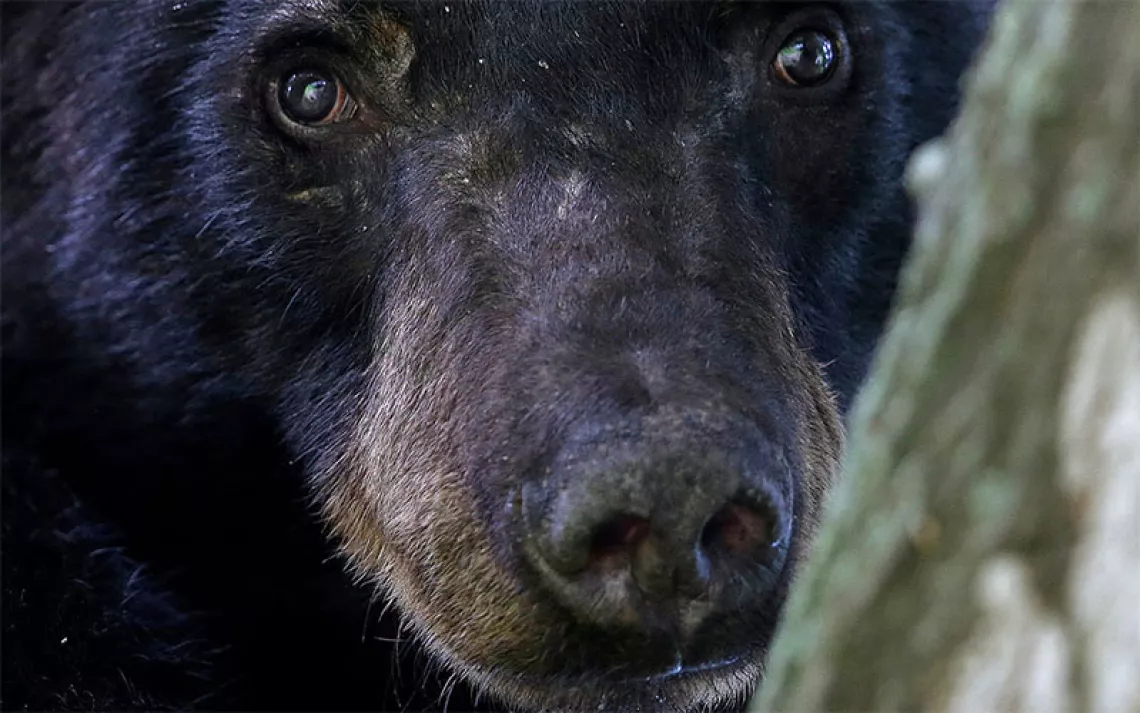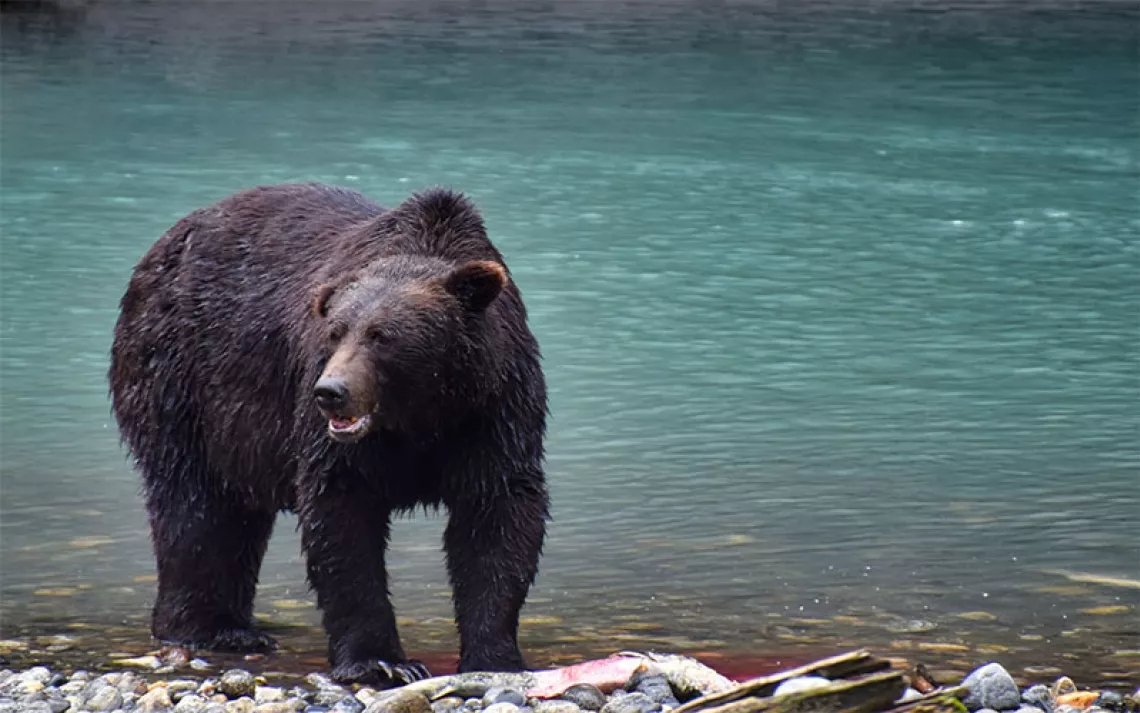Who’s the Fattest Bear at Katmai National Park and Preserve?
Cast your vote during the park’s annual Fat Bear Week
Fat Bear Week, the sixth-annual celebration of corpulence, is upon us.
Since early summer, the more than 2,200 coastal brown bears that live in Alaska's Katmai National Park and Preserve have been gorging on sockeye salmon (a 4,500-calorie bomb apiece), gaining more than two pounds a day to build up their fat reserves, which will have to last them through their long winter fast. Now through October 6, the public can throw their weight behind their favorite bear and vote on the pantheon of pudge in a bracket-style contest on Explore.org.
Twelve bears—who have been chosen for their girth, popularity on Explore.org’s bear cam live stream, and the ability of the rangers to get good before and after photos—are competing in the daily single-elimination tournament. Some of the contestants include mother #402, or Holly (the reigning champ), and her son #812; two-time winner #408, also known as Otis; and #747, a bear that’s so fat he’s having trouble walking. Participants can vote for the bear they think is the heaviest or has put on the most inches compared with the size of their frame—or for whatever other reason they want. It’s entirely subjective.
This year, Brooks River, which runs through the park, saw a prodigious salmon run, with a record-breaking 800,000 fish charging upstream. While the waterway has hosted consistently good returns over the past few years, Mike Fitz, a former park ranger who worked for 10 years at Katmai and now monitors the bear cam for Explore.org, said that he thinks the bears are bigger, overall, this year.
“I’ve not seen a single bear that looks like it’s hurting for food,” Fitz said, adding that even the mother bears, who generally need to devote loads of energy to making sure their offspring are fed (and as result are often the skinniest of the population in mid-summer), are looking more rotund.
“When you look at a fat bear, it’s a healthy bear,” Fitz explained. “Bears have a very different physiology from humans', because they need to survive hibernation. They need to carry all the energy they’re going to survive upon into the den to fuel them through that time."
The thickness of the brown bears is a testament to the strength of the yearly salmon run and the ecosystem both animals inhabit.
“Right now, the Bristol Bay ecosystem is intact,” Fitz said. “It’s a very wild landscape with a diversity of healthy spawning and rearing habitats. It’s operating at its full potential.”
The Bristol Bay region, where Katmai is found, maintains one of the last large and healthy sockeye salmon populations in the world. However, there are myriad threats to the health of the surrounding environment, which could in the future make it harder for the bears to pack on the necessary pounds for successful winter hibernation.
The proposed Pebble Mine, which would create an open pit for gold and copper mining at the headwaters of two of Bristol Bay’s most productive salmon-producing watersheds, could potentially devastate the salmon population if allowed to go through.
And climate change has already had an impact on the area. Last July, a heat wave struck Katmai, dramatically raising the water temperature, forcing salmon to alter their migration patterns or wait in colder freshwater lakes until the rivers cooled enough for them to complete their life cycle. It has also played a role in increasingly acidifying the oceans, which can alter food webs. While the effects of climate change are already apparent in salmon populations elsewhere in the northern Pacific, so far it hasn’t caused too much disruption to the denizens of Katmai.
But, Fitz said, “the survival of the ecosystem certainly is not guaranteed.”
These are just some of the topics that will be addressed over the course of Fat Bear Week on Explore.org and Katmai National Park’s various social media pages.
On October 9 from 2 to 4 P.M. Eastern Time, Fitz and current rangers from Katmai will run a bear cam “Textual” Q&A (questions can be submitted in the comments section of the Brooks Falls live stream YouTube page). Other events include a bear cam play-by-play (October 5 at 3 P.M. Eastern) in which rangers narrate the bear and salmon activity they see at Brooks River, and Fat Bear Tuesday (October 6 at 5 P.M. Eastern), in which rangers Naomi Boak and Brooklyn White and Fitz will discuss the lives of the two final contestants and how they achieved their girth, before final voting on Wednesday.
Katmai Park is largely undeveloped (there’s only one bridge in the whole 4.1 million acres, and it’s made of wood). It’s also arguably one of the most far-flung in the national park system as well as one of the most expensive to get to—the park can only be reached by plane or boat, both of which cost in the ballpark of $1,000 a person. Only about 37,000 people make the trip each year (for reference, Denali National Park and Preserve, also in Alaska, sees over 600,000 visitors annually). With those barriers preventing would-be visitors, it’s harder to get the general public to care about a bear population on the edge of America’s most remote state.
“Fat Bear Week gives us the opportunity to reach more people, so they can understand the lives of the bears and how they depend on salmon,” Fitz said. “I hope it allows people to look at the bears as individuals facing challenges to make a living and survive.”
 The Magazine of The Sierra Club
The Magazine of The Sierra Club








